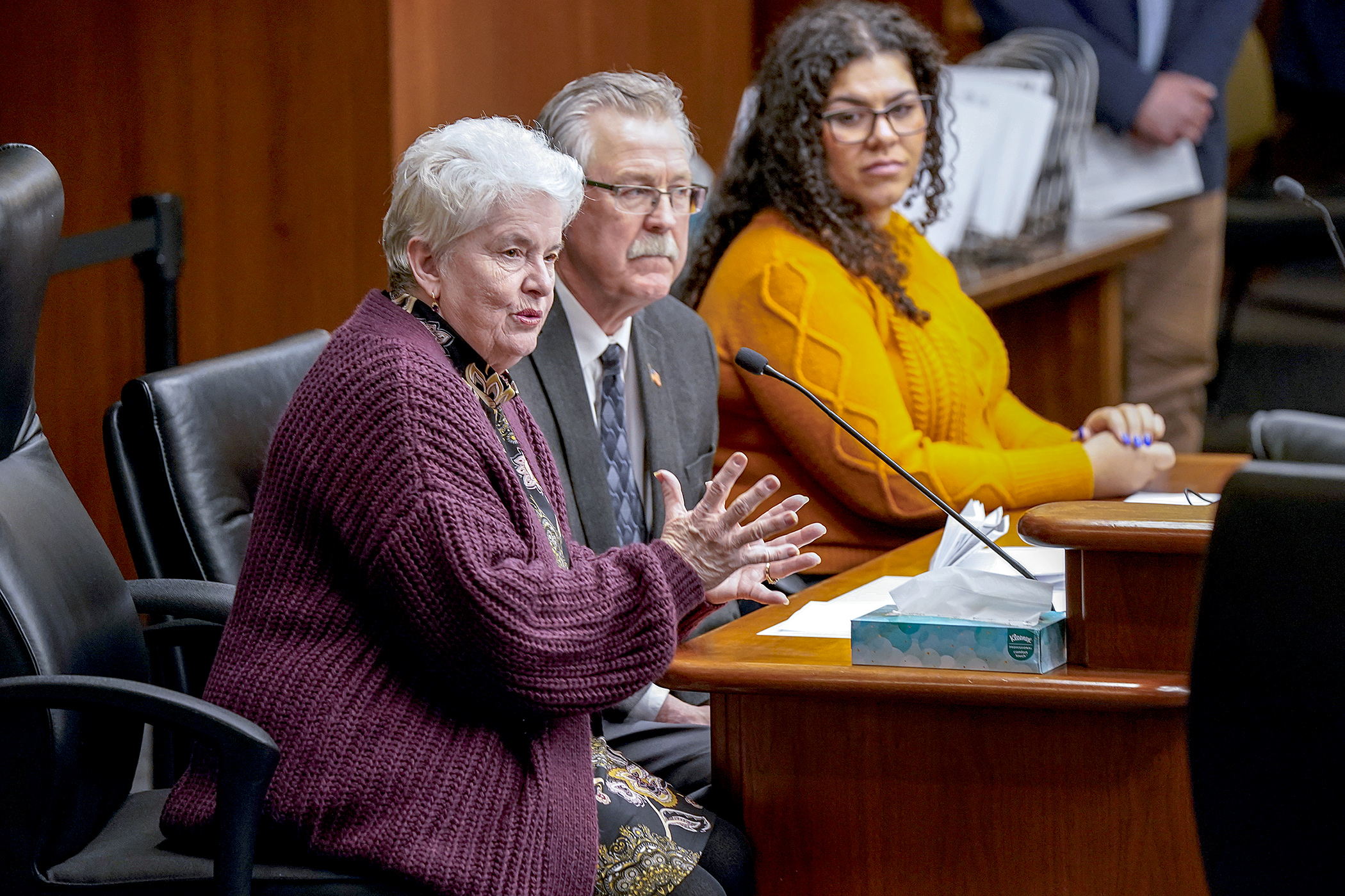Warmed by waste: Counties could reap fuel from food scraps

Minnesota’s newest renewable energy source works like a giant stomach.
Anaerobic digesters (or “digestors,” depending upon whom you ask) process organic materials like food waste and yard waste and turn them into energy, akin to how your stomach processes food and fuels your body.
Ramsey and Washington counties have plans to partner with Shakopee-based Dem-Con Companies and build an anaerobic digester in Shakopee to convert their counties’ food and yard waste into fuel. And Rep. Athena Hollins (DFL-St. Paul) hopes the state’s Renewable Development Account can give it a boost. She sponsors HF4938, which would earmark a yet-to-be-determined one-time appropriation to assist in the process.
On Wednesday, the House Climate and Energy Finance and Policy Committee laid the bill over, as amended, for possible inclusion in a larger climate and energy bill.
“This is a large project with an overall price tag of $100 million,” Hollins said. “The timing of this project is absolutely critical. If we can get shovels in the ground this year, we unlock $30 million in federal tax credits that expire at the end of 2024.”
In addition, Dem-Con President Bill Keegan says his company is committing $40 million to the project.
He explained how an anaerobic digester works.
“Think about it like your stomach,” he said. “You put food in and you get liquids, gases and solids out. The gases are renewable natural gas, the liquids get reincorporated back into the process, and the solids get turned into biochar through a high-temperature process. The biochar can be turned into soil amendments, can be used for mediation projects, and also for carbon sequestration.”
“The facility will produce 1.7 million therms, enough renewable natural gas to heat approximately 4,500 homes annually,” said Washington County Commissioner Fran Miron.
Within the sealed vessel that is an anaerobic digester, complex communities of microbes break down waste and convert it into renewable natural gas that can be transported via pipeline as a heat source.
The Legislature has heard anaerobic digester proposals before: A cash-only capital investment bill passed at the end of the 2023 session contained $26 million for one in Brooklyn Park. But funding for the Shakopee facility would come from the Renewable Development Account, a state-administered account designed to support renewable energy projects. It’s made up of money that Xcel Energy pays to the state for being able to store nuclear waste at its Prairie Island and Monticello nuclear power plants.
Related Articles
Search Session Daily
Advanced Search OptionsPriority Dailies
Ways and Means Committee OKs proposed $512 million supplemental budget on party-line vote
By Mike Cook Meeting more needs or fiscal irresponsibility is one way to sum up the differences among the two parties on a supplemental spending package a year after a $72 billion state budg...
Meeting more needs or fiscal irresponsibility is one way to sum up the differences among the two parties on a supplemental spending package a year after a $72 billion state budg...
Minnesota’s projected budget surplus balloons to $3.7 billion, but fiscal pressure still looms
By Rob Hubbard Just as Minnesota has experienced a warmer winter than usual, so has the state’s budget outlook warmed over the past few months.
On Thursday, Minnesota Management and Budget...
Just as Minnesota has experienced a warmer winter than usual, so has the state’s budget outlook warmed over the past few months.
On Thursday, Minnesota Management and Budget...